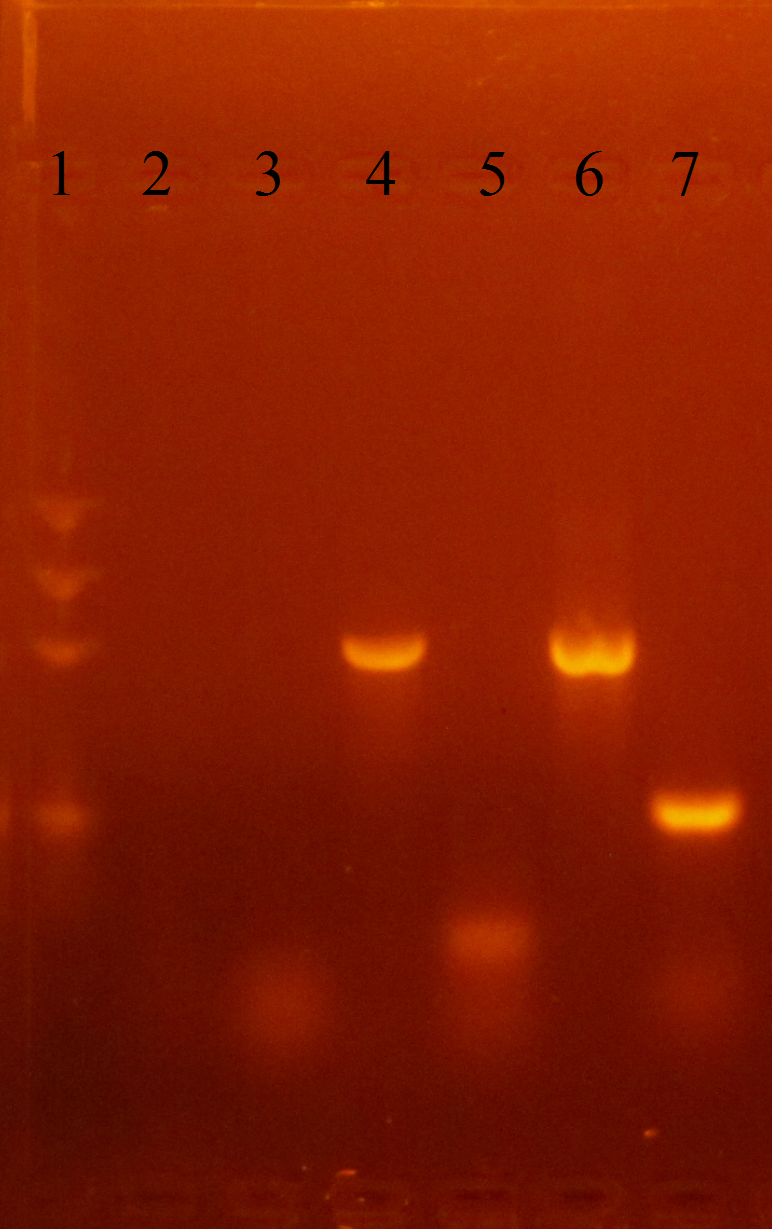Methods
Chips were used as a test food sample. The DNA extraction was conducted according to the standard protocol. At first, 1.5 g of the food sample was placed in a mortar, and 7.5 ml of distilled water was added. The sample was ground with a pestle in water for 5 min. After that, another 7.5 ml of distilled water was added, and the mix was ground for another 5 minutes until it became the slurry. 100 μl of the mix were added to the screwcap tube, which contained 500 µl of IstaGene matrix. The tube was marked, closed, and placed in the vortex for mixing. After that, the tube was placed in a heat box at 95 0C for 5 min. Centrifugation at the maximum speed during the 5 minutes was the next step. In the end, the tube was placed on ice for 5 min.
The standard protocol of PCR performing was used. In general, six tubes were tested: two negative controls with non-GMO food samples, two test samples, and two positive controls with GMO food samples. Six empty tubes were placed on ice. In tubes #1, #3, and #7, 10 µl of the green plant master mix were added. In tubes #2, #4, and #6, 10 µl of the GMO master mix were added. After that, 20 µl of samples were added to each tube (Table 1). All samples were added with a fresh pipette tip for each one and gently mixed. The tubes were recapped and placed in the PCR thermal cycler overnight.
Table 1.
PCR Sampling
The standard protocol of the agarose gel electrophoresis was used for the PCR results examination. After an apparatus preparation, the PCR tubes were taken from the cycler, placed in a capless microtube adaptor, and spun for 3 sec. To each tube, 10 μl of the Orange G loading dye were added and gently mixed. After that, 15 µl of a molecular weight ruler and all the samples were added into the agarose gel, according to Table 2. The gel was running during 30 min at 100 V.
Table 2.
The Electrophoresis Scheme
Results
Figure 1 shows the results of the experiment. According to it, single fragments of the DNA was identified in lines #4, #6, and #7. No DNA fragments were identified in lines #3 and #5. A line #2 remained empty because no sample was added into it. The molecular weight ruler worked correctly, and four fragments of the DNA with the different molecular weight were separated in the gel in a line #1.

Discussion
All the obtained results were correct and clear. Positive and negative controls were used as indicators of reaction accuracy. However, the Non-GMO control with plant primers was not added to the gel due to the lack of DNA. Thus, line #2 remained empty. Three other controls demonstrated accurate and correct results. No DNA fragments were identified in lane #3 with non-GMO food control and GMO primers. Line #6 contained DNA fragments, obtained during the PCR cycle with plant primers, and line #7 contained DNA fragments, obtained with GMO primers.
According to the PCR results, it could be stated that the test food sample did not contain GMOs. No DNA fragments were identified in line #5 that contained the food sample DNA and GMO primers. Line #4 contained DNA fragments, obtained during the PCR cycle with plant primers. It means that the procedure of the DNA extraction was performed correctly and samples contained the plant DNA from test food. However, it did not contain modified genes. It could be concluded that the test food sample was free from the GMOs. The stated hypothesis was rejected.